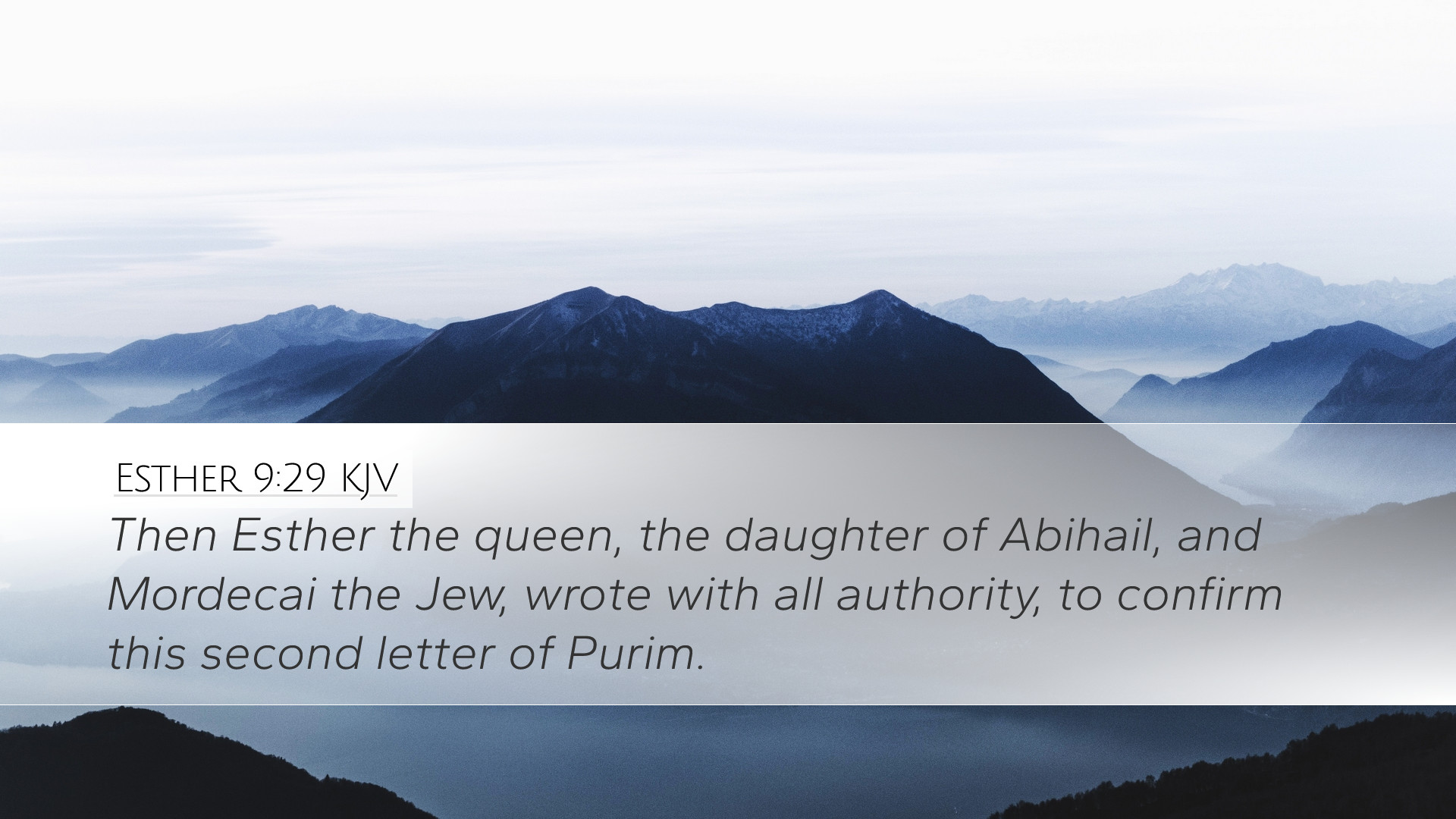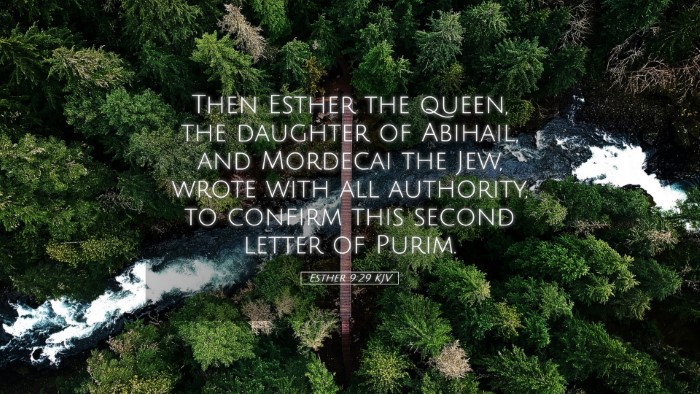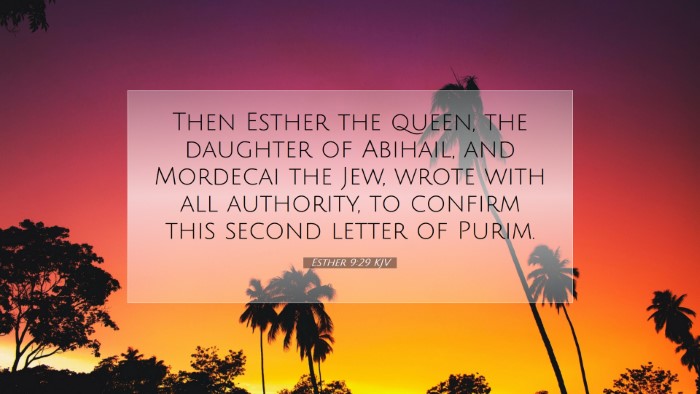Commentary on Esther 9:29
Esther 9:29 (KJV): "Then Esther the queen, the daughter of Abihail, and Mordecai the Jew, wrote with all authority to confirm this second letter of Purim."
Introduction
The book of Esther concludes with a powerful reminder of the celebration of Purim, an event that signifies the deliverance of the Jewish people from imminent destruction.
Esther 9:29 serves to reaffirm the establishment of this feast, highlighting the roles of Esther and Mordecai in its endorsement.
Their joint action illustrates both the authority and the unity found in their leadership within the Jewish community.
Contextual Analysis
In analyzing this verse, it is important to consider its historical and theological context:
-
Historical Background:
The events of Esther transpired during the reign of King Ahasuerus (Xerxes I) of Persia.
The Jews, scattered across the empire, faced existential threats due to Haman's plot.
God’s providence in orchestrating events leading to the Jews' deliverance is a central theme throughout the book.
-
Theological Implications:
The establishment of Purim reflects God's faithfulness to His covenant people.
This passage indicates the importance of remembrance in faith practices, as celebrations remind communities of divine intervention.
Analysis of Esther and Mordecai’s Roles
The verse highlights the collaborative effort of two pivotal figures in Jewish history:
-
Esther's Leadership:
Esther demonstrates courage and wisdom as she navigates her role as queen.
Her authority is fortified by her identity and heritage, which she embraces throughout the narrative.
The “second letter of Purim” thereby symbolizes her commitment to her people and her faith.
-
Mordecai's Influence:
Mordecai, a key figure in the plot, combines sagacity and humility.
His counsel has proven crucial to Esther's success, and together their writing affirms the Jewish resolve to celebrate their deliverance, reinforcing community identity and solidarity.
The Authority of the Letter
The term "with all authority" suggests an official and binding nature to their correspondence.
This letter serves to formalize the observance of Purim, indicating the need for recognition and participation across the Jewish populace.
Scholars suggest that this authority is rooted in the divine mandate that accompanies their actions.
Purim as a Cultural and Religious Celebration
The observance of Purim remains an essential aspect of Jewish life.
This feast includes not only commemoration but also joyful celebration, feasting, and giving gifts, as elaborated in the preceding verses.
All of these aspects demonstrate how Esther 9:29 encapsulates both the celebratory and solemn responsibilities of faith communities.
Lessons for Contemporary Application
The narrative of Esther and Mordecai offers a plethora of applications for modern believers:
-
Courage in Adversity:
Esther’s boldness calls believers to stand firm in faith amidst trials that threaten their community.
The importance of advocating for justice and deliverance resonates in numerous contemporary contexts.
-
Unity in Leadership:
The partnership between Mordecai and Esther highlights effective leadership through collaboration, emphasizing that shared purpose can lead to tangible results in service to others.
-
Remembrance and Celebration:
Purim’s emphasis on remembrance teaches the value of looking back at God’s faithfulness as a source of hope and inspiration for the future.
Communities of faith should prioritize regular reflection on God's deeds in their history.
Conclusion
Esther 9:29 thus serves not only as a historical record of the establishment of Purim but also encapsulates the essence of faithfulness, deliverance, and joy.
Through the combined efforts of Esther and Mordecai, we see how individuals can lead communities to recognize and celebrate divine providence.
This verse resonates with the understanding that while the challenges may be great, the faithfulness of God is greater still.
Esther's legacy demonstrates the potent intersection of faith and bravery, encouraging today's believers to embody these qualities within their own communities.


